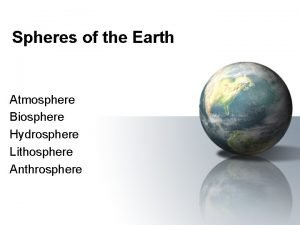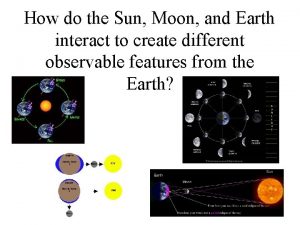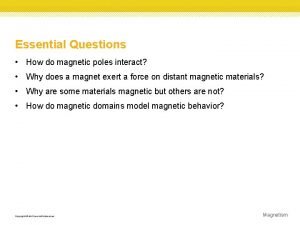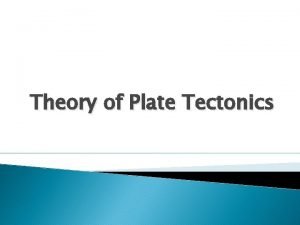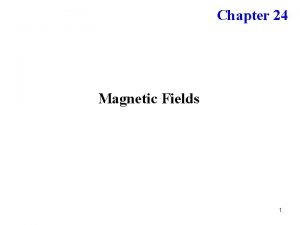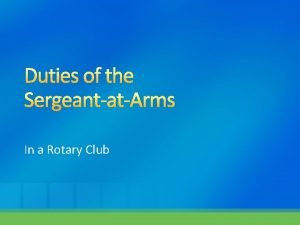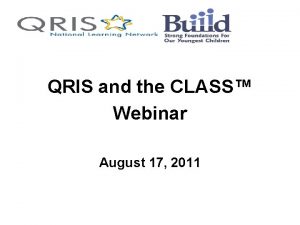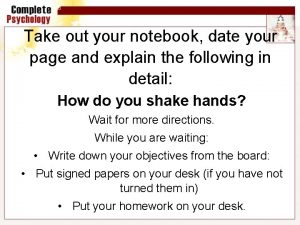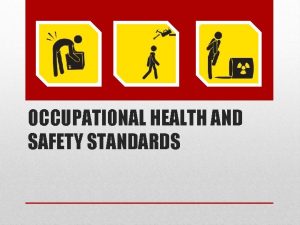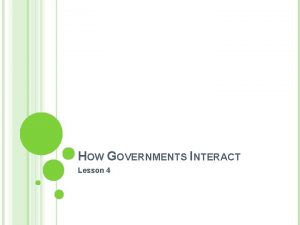T Take Notes I Interact with your notes

































- Slides: 33

T = Take Notes I = Interact with your notes P = Practice with plenty of repetition S = Self-test

CHAPTER 11: SECTION 2: THE GAS LAWS

ESSENTIAL QUESTIPONS • How are gas pressure and volume related when temperature is held constant? • How are gas volume and temperature related when pressure is held constant? • According to Avogadro's law, how are moles of a gas and its volume related when temperature and pressure are constant?

THE GAS LAWS • This hot air balloon was designed to carry a passenger around the world. You will study some laws that will allow you to predict gas behavior under specific conditions, such as in a hot air balloon.

BOYLE’S LAW: PRESSURE AND VOLUME • Boyle’s Law: Pressure and Volume • How are the pressure, volume, and temperature of a gas related? • If the temperature is constant, as the pressure of a gas increases, the volume decreases.

VOLUME AND PRESSURE OF A GAS: BOYLE’S LAW • Boyle's Law states that pressure is inversely proportional to volume and is expressed as; P × V = a constant

BOYLE’S LAW: PRESSURE AND VOLUME • Boyle’s law states that for a given mass of gas at constant temperature, the volume of the gas varies inversely with pressure.

USING BOYLE’S LAW • Boyle's Law states that when temperature is not changing, pressure is inversely proportional to volume and is expressed as P × V = a constant. • Notice that an increase in container volume results in a lower pressure.

SOLVED PROBLEM If a sealed bag of chips increases its volume from 725 m. L to 815 m. L on a drive from the beach to a mountain, what is the new pressure inside the bag? Asked What is the new volume (V 2) of the balloon when it reaches 100, 000 ft? Given P 1 = 1. 00 atm; V 1 = 725 m. L; V 2 = 815 m. L Relationshi P 1 V 1 = P 2 V 2 ps Solve Answer The bag pressure will decrease to 0. 890 atm.

PRESSURE IN DAILY LIFE • There is no such thing as “suction” • What seems like “suction” is not a pull force; it is an extra push force that is created when there is a pressure imbalance • “Suction” stops working when pressure is balanced… no imbalance, no extra push



CHARLES’S LAW: TEMPERATURE AND VOLUME • Charles’s Law: Temperature and Volume • As the temperature of an enclosed gas increases, the volume increases, if the pressure is constant.

CHARLES’S LAW: TEMPERATURE AND VOLUME • As the temperature of the water increases, the volume of the balloon increases.

CHARLES’S LAW: TEMPERATURE AND VOLUME • Charles’s law states that the volume of a fixed mass of gas is directly proportional to its Kelvin temperature if the pressure is kept constant.


CREATING A NEW TEMPERATURE SCALE • As temperature decreases, so does volume • Lord Kelvin realized that if you extend the line to zero volume, you would reach the lowest possible temperature • − 273 °C is this lowest temperature, known as absolute zero • No negative temperatures are possible on the Kelvin scale

CHARLES’ LAW • Charles law states that at an unchanging pressure, volume is directly proportional to temperature, and can be expressed as V/T = a constant.

SOLVED PROBLEM How small will a 5. 0 L balloon become when you take it from your classroom, where the temperature is 22. 1 °C, to the cafeteria freezer where it is -18. 0 °C? Asked What is the new balloon volume (V 2) when the temperature drops to -18. 0 °C? Given V 1 = 5. 0 L, T 1 = 22. 1 °C, T 2 = -18. 0 °C Relationship s Solve First, Convert temperatures from °C to K: T 1 in Kelvin: 22. 1 °C + 273=295. 1 K T 2 in Kelvin: -18. 0 °C + 273 =255 K Next, enter quantities into the equation


COMBINING BOYLE’S LAW AND CHARLES’ LAW • The combined gas law puts Boyle’s law and Charles’ law together to allow pressure, volume, and temperature to vary.

SOLVED PROBLEM Meteorologists use weather balloons to measure atmospheric conditions up to 100, 000 feet above sea level where pressure equals 1. 120 k. Pa and temperature is about -46. 0 °C. A weather balloon with 12. 5 L of helium gas is at sea level where the pressure is 101. 325 k. Pa and the temperature is 19. 1 °C. How big will the balloon be when it reaches 100, 000 feet? Asked What is the balloon’s new volume (V 2) when it reaches 100, 000 feet? Given P 1=1. 00 atms; V 1=18. 0 m 3; T 1=20. 0 °C; P 2=0. 0100 atm; T 2=-50. 0 °C Relationships Kelvin conversion, K = °C + 273, and the combined gas law, or rewritten as: P 1 V 1 T 2 = P 2 V 2 T 1 Solve When converted to Kelvin, T 1 = 292. 1 K and T 2 = 227 K 101. 325 k. Pa × 12. 5 L × 227 K = 1. 120 k. Pa × V 2 × 292. 1 K

GAY-LUSSAC’S LAW: PRESSURE AND TEMPERATURE • Gay-Lussac’s Law: Pressure and Temperature • As the temperature of an enclosed gas increases, the pressure increases, if the volume is constant.

GAY-LUSSAC’S LAW: PRESSURE AND TEMPERATURE • Gay-Lussac’s law states that the pressure of a gas is directly proportional to the Kelvin temperature if the volume remains constant.

GAY-LUSSAC’S LAW: PRESSURE AND TEMPERATURE • A pressure cooker demonstrates Gay-Lussac’s Law.


THE COMBINED GAS LAW • When is the combined gas law used to solve problems? • The combined gas law describes the relationship among the pressure, temperature, and volume of an enclosed gas.

THE COMBINED GAS LAW • The combined gas law allows you to do calculations for situations in which only the amount of gas is constant.


POST-ASSESSMENT • How are gas pressure and volume related when temperature is held constant?

POST-ASSESSMENT • How are gas pressure and volume related when temperature is held constant? • Gas pressure and volume are inversely proportional at a constant temperature. As pressure increases, volume decreases.

POST-ASSESSMENT • How are gas volume and temperature related when pressure is held constant?

POST-ASSESSMENT • How are gas volume and temperature related when pressure is held constant? • Gas temperature and volume are directly proportional when pressure is constant. As temperature increases, volume increases.
 Take a bus or take a train
Take a bus or take a train Whats the difference between rotation and revolution
Whats the difference between rotation and revolution How does biosphere interact with hydrosphere
How does biosphere interact with hydrosphere Member of the same species
Member of the same species How organisms interact in communities answer key
How organisms interact in communities answer key How do the sun moon and earth interact
How do the sun moon and earth interact Hydrosphere
Hydrosphere How do magnetic poles interact
How do magnetic poles interact Humans built a dam out of rock materials
Humans built a dam out of rock materials Tectonic plates interact at places called plate
Tectonic plates interact at places called plate Interact club handbook
Interact club handbook Organizing students to interact with content
Organizing students to interact with content How do similar (s-s or n-n) magnetic poles interact?
How do similar (s-s or n-n) magnetic poles interact? St lucy's home raised by wolves answers
St lucy's home raised by wolves answers Human society meaning
Human society meaning Sergeant at arms in rotaract
Sergeant at arms in rotaract How do air masses interact to form a hurricane apex
How do air masses interact to form a hurricane apex This is any human movement included in the act of dancing
This is any human movement included in the act of dancing Identify the examples of interactional vandalism
Identify the examples of interactional vandalism Interact
Interact Interact
Interact Body interact answers
Body interact answers Interact conference 2018 teachstone
Interact conference 2018 teachstone Kesler science electromagnetic spectrum answer key
Kesler science electromagnetic spectrum answer key Interact
Interact Give us your hungry your tired your poor
Give us your hungry your tired your poor To take notes in spanish
To take notes in spanish Sit down and take notes
Sit down and take notes Please take notes
Please take notes Active note taking
Active note taking Notes on oedipus the king
Notes on oedipus the king Take out your notebook
Take out your notebook Take out your homework
Take out your homework Take away any liquid near your working area true or false
Take away any liquid near your working area true or false


